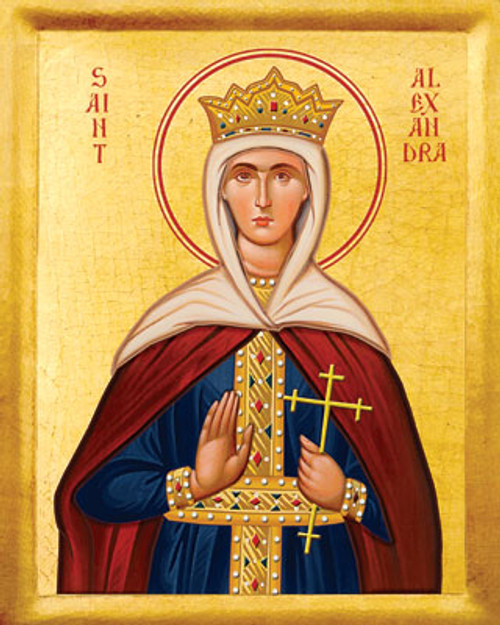Commemorated on February 6
Edmund was born in 841. Early accounts and stories provide a cloud over who is his father. The sources considered the most reliable represent Edmund as descended from the preceding kings of East Anglia. When King Ethelweard died in 854, it was Edmund, while only fourteen years old, who succeeded to the throne.
Little is known of Edmund’s next fourteen years. His reign was said to be that of a model king. He was said to have treated all with equal justice and was unbending to flatters. He was said to have spend a year at his residence at Hunstanton learning the Psalter which he was able to recite from memory.
The sources description of his martyrdom vary. The Danes of the Great Heathen Army advanced on East Anglia in 869 and were confronted by King Edmund and his army. While Edmund may have been killed in battle, popular traditions are that Edmund refused the heathen Danes’ demands that he renounce Christ or that he could hold his kingdom as a vassal under heathen overlords. Both stories date from soon after his death and it is not known which may be correct.
According to an early biographer, Abbo of Fleury, Edmund chose, in the manner of Christ, not to strike arms with the heathen Danes and was captured and taken to Hoxne in Suffolk. There he was beaten and then tied to a stout tree where he was again beaten. Hearing Edmund’s calls to Christ for courage, the Danes further attacked him, shooting many arrows into the bound king who showed no desire to renounce Christ. Finally, he was beheaded on November 20, 869.
(Besides the Orthodox ascetic Barsanuphius the Great, there was another Barsanuphius, a Monophysite heretic. Sophronius, Patriarch of Jerusalem, anathematized him in his “Confession of Faith,” sent to the Sixth Ecumenical Council).
We do not know when Saint Barsanuphius arrived at the monastery of Abba Seridus, nor anything about the home and family of Saint John the Prophet. Following the instructions of Saint Barsanuphius, John attained the heights of perfection, and became like his teacher in all things. Out of humility, he sent those who came to him with questions to Abba Barsanuphius.
Saint John foresaw and predicted many things, even his own death a week after the death of Abba Seridus. Abba Elian, the young igumen of this monastery, begged John to remain with him for two more weeks, in order to teach him the Rule and how to govern the monastery. Saint John fulfilled his request and died after two weeks.
Saint Barsanuphius the Great survived his disciple and friend, but after St. John's death embraced complete silence and refused to give answers to anyone. These two ascetics have left the soul-profiting book, GUIDANCE TOWARD SPIRITUAL LIFE: ANSWERS TO THE QUESTIONS OF DISCIPLES by the Holy Monastic Fathers Barsanuphius and John as their spiritual legacy. This book was known to many saints who lived at a later time, as evidenced by the wrings of Saint Theodore the Studite (November 11 and January 26), the hieromonk Nikon Chernogorets (+ 1060), Saint Simeon the New Theologian (March 12), and other Orthodox ascetics and writers.
Edmund’s body was interred at Beadoriceworth, the modern Bury St Edmunds. This place became a shrine of Edmund that greatly increased his fame. His popularity among the nobility of England grew and lasted. His banner became a symbol among the Anglo-Normans in their expeditions to Ireland and to Caerlaverock Castle. His crest was borne on a banner at the Battle of Agincourt. Churches and colleges throughout England have been named after St Edmund.
In recent years, moves were made in England to restore St. Edmund as the patron saint of England. Edmund had been replaced by St. George as the patron saint through King Edward III’s association of St. George with the Order of the Garter. The attempt failed. However, St. Edmund was named the patron saint of the County of Suffolk in 2006.







